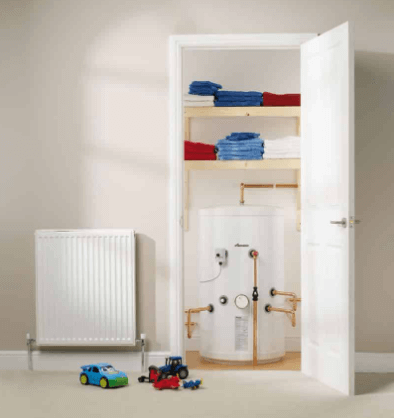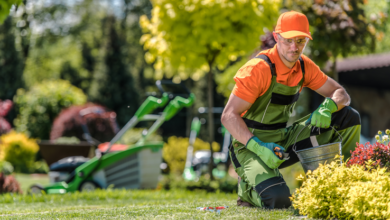Common Problems With Unvented Cylinders and How to Fix Them

Unvented cylinders play a vital role in modern heating systems, delivering high-pressure hot water without the need for bulky cold water tanks. They’re especially popular in newer homes thanks to their space-saving design and energy-efficient performance.
However, because they operate as sealed systems, they require regular monitoring to stay safe and reliable.
Pressure, temperature, and internal components must all work in harmony—if any part fails or goes unchecked, it can lead to serious issues like poor water flow, strange noises, or even leaks.
That’s why it’s essential to understand the common problems that can crop up and know how to fix them before they get worse.
Common Issues with Unvented Cylinders
Unvented cylinders are great for efficiency, but they do have their hiccups. Knowing what might go wrong can keep things running smoothly and avoid messing up your routine. Here’s what to watch out for:
- Pressure Problems. A common issue is pressure imbalance. If the pressure relief valve messes up, you might see water pressure drop or shoot up. This can cause poor hot water flow or even damage your system;
- Leaks. Leaks happen a lot, often because of worn-out seals or joints. Ignoring them could mean water damage and a drop in efficiency. It’s a good idea to check connections regularly to catch leaks early on;
- Temperature Inconsistencies. Sometimes, the water temperature goes wonky, which is pretty annoying. This might be due to dodgy thermostats or heating elements needing a tweak or a swap. Keeping the temperature steady is super important for comfort and saving energy.
Sorting out these problems quickly can keep your system in top shape and make your unvented cylinder last longer.
How to Check and Adjust Pressure Settings of an Unvented Cylinder
Making sure the pressure in an unvented cylinder is just right is really important for it to work safely and well. First off, find the pressure relief valve, which is usually on the top or side of the cylinder. This little thing is key because it lets out extra pressure to stop any damage.
Steps to Check Pressure
Before you begin any checks, it’s important to turn off both the power and water supply to ensure safety and prevent any issues. Once everything is off, locate the pressure gauge on your unvented cylinder and take a look at the reading—it should typically fall between 22 to 44 psi.
If the pressure is outside this range, you can make adjustments by either releasing some water or adding more using the appropriate valve. Take care when doing this to avoid injury or throwing off the system’s balance, as incorrect adjustments can lead to further complications.
Importance of Correct Pressure
Keeping the pressure right is super important for good hot water flow and to keep the cylinder from getting damaged inside. If you’re not sure how to adjust it, it’s a good idea to ask a pro to make sure everything’s safe and up to code.
Fixing Leaks
Leaks in unvented cylinders are a big deal and need fixing right away. If you don’t, you might end up with a soggy mess and a less efficient system. Sorting out leaks fast is key to keeping everything working well and avoiding pricey repairs.
Knowing what to look for and how to fix it can really help keep your home safe and the cylinder humming. Here’s some steps to address leaks:
- Inspect Connections. Have a close look at all the connections you can see. If you spot any damp bits, that’s a red flag. Loose joints? Just give them a careful tightening with the right tool, but don’t go overboard;
- Evaluate Seals. Check out the seals on joints and valves. If they seem worn out or busted, swapping them out can stop leaks and keep things running smoothly;
- Assess the Relief Valve. If the relief valve’s still acting up, it might be a pressure issue or something inside. Check the pressure, and if it’s still not right, think about getting a new valve.
Jumping on these leaks quickly can save your home from water damage, keep those bills in check, and make sure your unvented cylinder does its job. It’s a good idea to chat with a pro to make sure everything gets fixed up safely.
Resolving Temperature Inconsistencies
Temperature inconsistencies in unvented cylinders can make your home less comfortable and lead to wasted energy, so it’s worth sorting them out as soon as possible.
The thermostat is usually the first thing to check—it’s responsible for keeping the water at a steady 60°C in most homes. If your water feels too cold or isn’t heating properly, the thermostat might need adjusting or replacing.
It’s also important to inspect the heating elements. Always switch off the power before taking a look to stay safe. Once the cover is off, check for any signs of damage, rust, or wear.
If the elements are dirty, a good clean may help, but if they’re faulty, replacing them is the best solution.
Regular maintenance helps keep everything running smoothly, and if problems continue, calling a qualified professional can ensure your system stays safe, efficient, and reliable.
Maintenance Tips for Unvented Cylinders
Taking care of your unvented cylinder is essential to keeping it running efficiently and extending its lifespan—think of it like giving your car a regular service.
A quick check every few months can help spot small issues before they turn into costly problems, and keeping the system clean helps everything run smoothly.
One key task is inspecting the anode rod, which protects against rust; it should be checked yearly and replaced if it’s worn down to less than half an inch.
Flushing out sediment buildup is also important, as debris settling at the bottom of the tank can reduce efficiency and even cause overheating. Draining a small amount of water can clear this out and help prevent future issues.
While some tasks are simple, it’s a good idea to have a professional service your system annually—they can handle deeper inspections, adjust the thermostat, and replace worn parts.
By following these basic maintenance steps, you’ll ensure a reliable hot water supply, avoid expensive repairs, and enjoy peace of mind knowing your system is in excellent shape.
When to Seek Professional Help
If you’re having ongoing trouble with your unvented cylinder and can’t seem to fix it, calling in a professional is a smart move. Persistent leaks that don’t stop even after tightening connections usually point to a deeper issue that needs expert attention.
The same goes for pressure problems—if adjusting the pressure relief valve doesn’t help, it’s safer to let a qualified technician take over. Temperature fluctuations that continue despite checking the thermostat are another sign that it’s time to bring in a specialist.
Be sure to choose someone experienced with unvented systems, as they’ll know how to diagnose and resolve issues safely and efficiently.
It’s also a good idea to schedule a professional inspection once a year to catch any hidden problems early and ensure your system stays safe and in top working condition.
Read also: How Small Changes at Home Can Build a More Energy-Efficient Future
Conclusion
Keeping an eye on your unvented cylinder through regular check-ups and timely fixes is one of the best ways to ensure your hot water system runs safely and efficiently.
By catching small issues early—like leaks, pressure drops, or temperature changes—you can prevent bigger, more expensive problems down the line.
Routine maintenance not only helps your system last longer but also keeps your energy bills in check and your daily routines uninterrupted. Staying on top of things gives you peace of mind and adds value to your home in the long run.
And if you ever decide to sell, future homeowners will appreciate the care and attention you’ve given your system.



